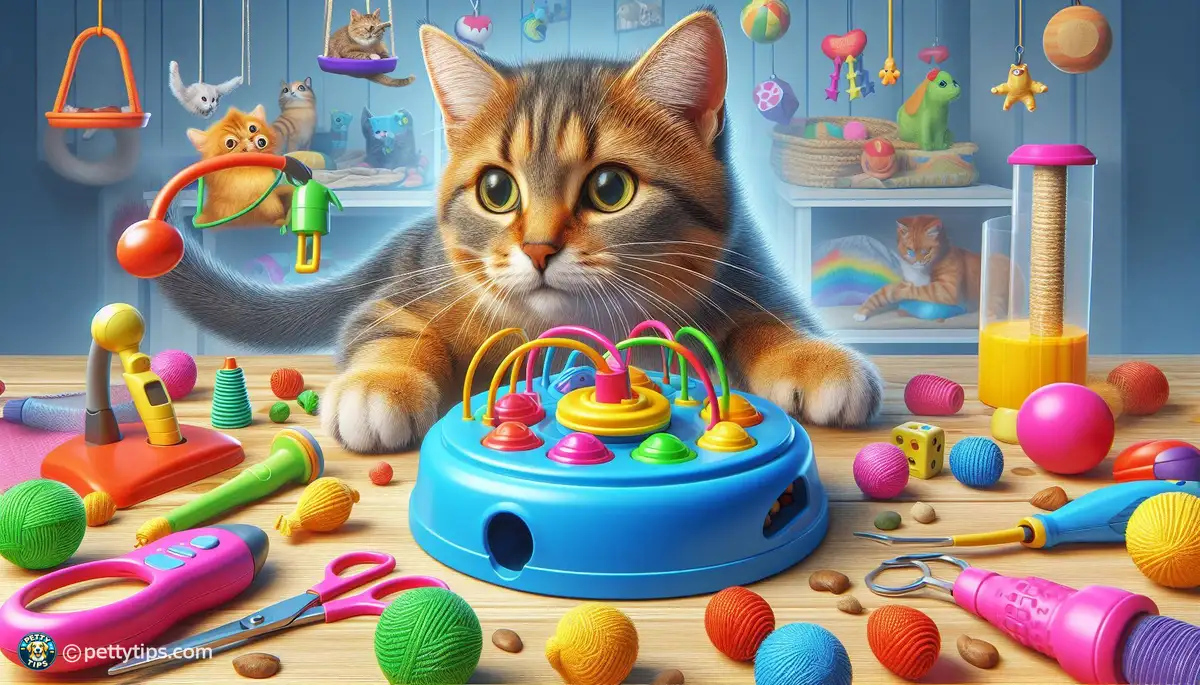- Home
- Pet Health and Wellness
- Using Food Dispensing Toys to Combat Boredom in Pets
Using Food Dispensing Toys to Combat Boredom in Pets

Why Boredom is a Real Concern for Pets
Boredom might seem like a trivial issue, but for our furry friends, it's a serious matter. Just like humans, pets can experience boredom when they lack mental and physical stimulation. This can lead to a range of behavioral issues, from excessive barking and chewing to depression and anxiety. Many pet owners underestimate the importance of keeping their pets mentally engaged, but it's crucial for their overall well-being.
Signs Your Pet is Bored
Spotting boredom in pets isn't always straightforward, as it can manifest in various ways depending on the animal. However, some common signs include destructive behavior, excessive vocalization, lethargy, and a general lack of interest in toys or activities. If you notice any of these signs in your pet, it's essential to address the issue promptly to prevent further problems down the line.
Introducing Food Dispensing Toys
What Are Food Dispensing Toys?
Food dispensing toys are innovative devices designed to stimulate pets mentally and physically by dispensing treats or kibble as they play. These toys come in various shapes and sizes, from simple puzzle feeders to complex interactive devices. The basic idea is to make mealtime more engaging for pets, turning it into a fun and rewarding activity rather than a mundane routine.
How Food Dispensing Toys Work
The mechanics of food dispensing toys are relatively simple yet effective. Most toys feature hidden compartments or mechanisms that release food when manipulated by the pet. This encourages them to use their natural instincts and problem-solving skills to access the treats, keeping them entertained and mentally stimulated in the process. Additionally, the intermittent reinforcement of food rewards mimics the hunting and foraging behavior of wild animals, satisfying their innate instincts.
Benefits of Using Food Dispensing Toys
Mental Stimulation
One of the most significant benefits of food dispensing toys is their ability to provide pets with much-needed mental stimulation. By engaging their brains and encouraging problem-solving, these toys help prevent boredom and alleviate stress and anxiety. For intelligent breeds or highly energetic pets, mental stimulation is just as important as physical exercise in maintaining overall well-being.
Physical Exercise
In addition to mental stimulation, food dispensing toys also promote physical exercise, especially for pets that might not get enough activity otherwise. By making mealtime an interactive experience, these toys encourage pets to move around, explore their environment, and engage in natural behaviors like pawing, chasing, and chewing. This not only helps burn off excess energy but also promotes better muscle tone and joint health.
Choosing the Right Food Dispensing Toy
Consider Your Pet's Size and Breed
When selecting a food dispensing toy for your pet, it's essential to consider their size, breed, and individual preferences. Larger breeds may require more durable toys that can withstand rough play, while smaller breeds might prefer smaller, more lightweight options. Similarly, some pets may prefer toys that dispense treats quickly, while others enjoy the challenge of more complex puzzles.
Assess Your Pet's Skill Level
Another factor to consider is your pet's skill level and previous experience with interactive toys. For beginners, simpler toys with fewer moving parts are often the best choice, as they're less intimidating and easier to master. As your pet becomes more proficient, you can gradually introduce more advanced toys to keep them challenged and engaged.
Tips for Introducing Food Dispensing Toys
Start Slowly
When introducing a new food dispensing toy to your pet, it's essential to start slowly and allow them time to adjust. Begin by simply placing the toy near their food bowl during mealtime, allowing them to investigate it at their own pace. Once they're comfortable with the toy's presence, you can gradually begin to incorporate treats or kibble into the device to encourage interaction.
Use High-Value Treats
To increase your pet's motivation and interest in the food dispensing toy, consider using high-value treats or their favorite snacks. These special rewards will make the toy more enticing and rewarding, encouraging your pet to engage with it more enthusiastically. Just be mindful of portion sizes and adjust your pet's daily caloric intake accordingly to prevent overfeeding.
Incorporating Food Dispensing Toys into Your Pet's Routine
Make Mealtime Interactive
One of the easiest ways to incorporate food dispensing toys into your pet's routine is by using them during mealtime. Instead of feeding your pet from a traditional bowl, portion out their daily meals into the toy and let them work for their food. Not only does this make mealtime more enjoyable, but it also slows down eating, preventing issues like indigestion or bloat.
Rotate Toys Regularly
To prevent your pet from getting bored with their food dispensing toys, it's essential to rotate them regularly and introduce new ones periodically. This keeps the experience fresh and exciting for your pet, preventing them from losing interest or becoming frustrated with familiar toys. You can also vary the types of toys you use, including puzzles, balls, and treat dispensers, to provide a diverse range of mental and physical challenges.
